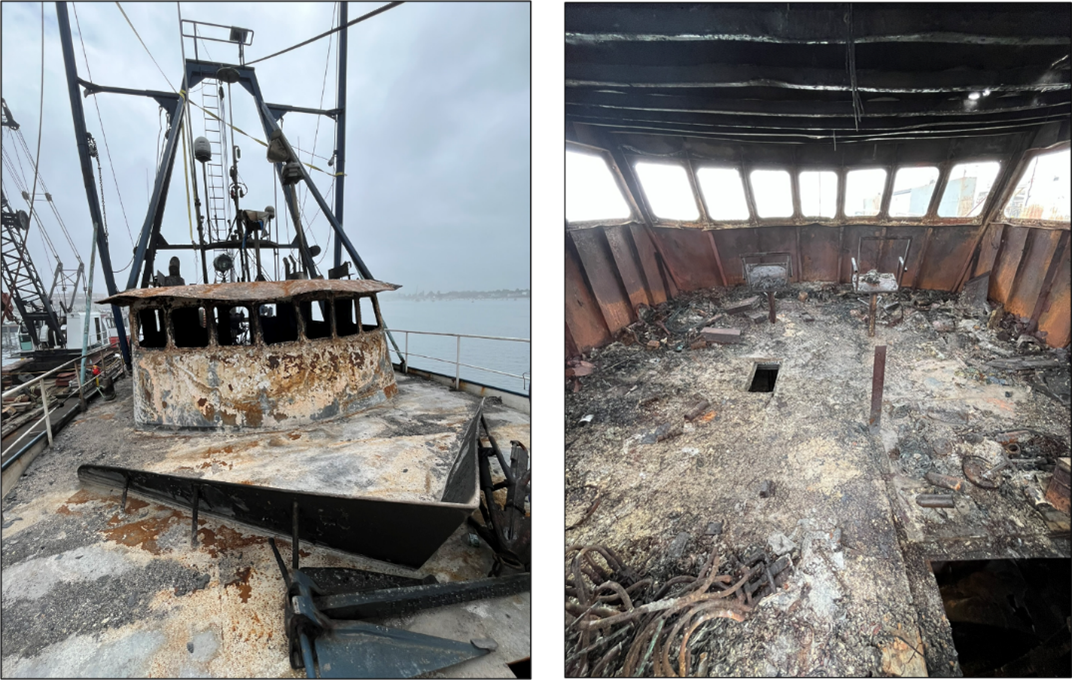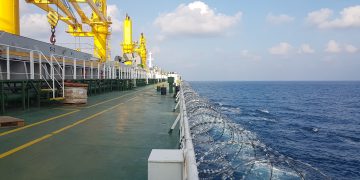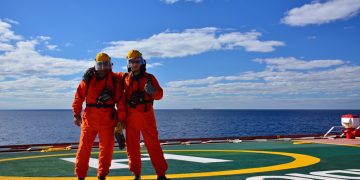The National Transportation Safety Board (NTSB) has published an investigation report into an incident where a hydraulic system malfunction likely led to a fire aboard a fishing vessel in the Gulf of Maine.
The incident
On August 11, 2024, about 2056 local time, while the fishing vessel Three Girls was engaged in fishing operations in the Gulf of Maine about 118 miles east-southeast of Portland, Maine, a fire broke out in the vessel’s engine room. The five crewmembers and a National Marine Fisheries Service observer abandoned the burning vessel into a liferaft and were rescued by a US Coast Guard cutter crew that same evening. There were no injuries, and no pollution was reported. Damage to the vessel was estimated at $1.3 million.
Analysis
While the fishing vessel Three Girls was underway and fishing in the Gulf of Maine, a fire broke out in the engine room as the crew hauled in the net. Coast Guard, ATF, and NTSB investigators’ postcasualty examination of the vessel showed substantial damage on all decks. Because the captain reported initially observing fire in the engine room, investigators concentrated their inspection there. In the engine room, the greatest extent of damage was observed in the forward, port corner of the engine room above the walkways (plywood decking above steel framing).
The lower portion of the main engine and all machinery below the walkways were undamaged by fire, so the fire had most likely not started below the walkways in the lower engine room. Several exposed surfaces were heavily covered in soot, and there were a few areas of “clean burn” present between the hydraulic return oil filter housing and the winch engine that was operating at the time, indicating the fire had burned hottest there. Therefore, the fire area of origin was likely in the port, forward corner of the engine room between the hydraulic return oil filter housing and the winch engine.
All hydraulic hoses from the hydraulic return oil filter box were found detached from their aluminum filter housing covers, which had been melted away by the fire, indicating the hoses, their fittings, or another component of the box had failed. Due to the extent of the fire damage throughout the engine room, investigators were unable to determine which hydraulic hose, fitting, or component may have initially failed.
The integrity of the filter box itself may have been compromised due to the excessive internal pressure that the box had been exposed to before the return pipe was enlarged, which had caused the box to bulge (as observed by the captain 2 years before the fire). If the filter box or a component of the filter box failed, pressurized hydraulic oil would have sprayed into the engine room onto nearby operating machinery. Hydraulic oil is widely used in the marine industry for power transmission and is used under high pressure (2,000–3,000 psi), and the vessel’s captain reported this system typically had pressures of 2,200–2,800 psi.
When a failure in a hydraulic system causes a breach, such as a ruptured hose or failed fitting, the pressurized hydraulic oil can escape at high velocities and become atomized into an extremely flammable and potentially explosive mist, particularly where ignition sources are present. A few minutes before the captain discovered the fire, he was operating the hydraulic net reel to haul the fishing net back on deck. The hydraulic system was running about 90%, with all the hydraulic components operational at full load, and the winch engine was running at nearly full speed. The starboard generator was also running.
The winch engine’s exhaust manifold and piping, which were located near several components of the hydraulic system, would have been operating at 800–1,000°F. The exhaust piping was wrapped with sections of insulation blanketing; this insulation had gaps between pieces where the spray of hydraulic oil could have penetrated and made contact directly with the exhaust manifold or pipe. The running starboard generator, located starboard of the winch engine, would have had a temperature of about 600ºF, well above the flashpoint of the hydraulic oil (329°F).

The surface temperature of either the winch engine exhaust manifold and piping or starboard generator hot surfaces could have provided an ignition source for the spraying pressurized hydraulic oil from a failed component of the hydraulic return oil filter box/housing. However, because the winch engine exhaust manifold and piping were closer to the filter box and were hotter than the starboard generator, the exhaust manifold or piping were more likely to cause the ignition of a fire. Investigators could not find any alternative ignition or fuel sources near the fire area of origin.
Therefore, the cause of the fire was likely the ignition of pressurized hydraulic oil spraying on components of the running winch engine exhaust system.
When the captain discovered the fire, he determined it was too intense to fight. After directing the crew to prepare to abandon ship, he shut down the winch engine from the wheelhouse remote station, which would have stopped the spray of pressurized hydraulic oil that was fueling the fire. However, he was unable to stop the main engine—which was providing propulsion—and starboard electrical generator—which powered the supply and exhaust ventilation fans in the engine room—from the wheelhouse because neither engine was equipped with remote shutoffs. Additionally, there were no dampers or remote shutoffs for the supply and exhaust fans in the engine room to secure this ventilation.
Therefore, oxygen, feeding the fire, continued to circulate throughout the engine room, and the fire continued to burn. Within minutes, the fire overwhelmed the wheelhouse, and smoke began blowing over the stern deck, where the crew had mustered. The inability to secure ventilation to the engine room allowed for a continued supply of oxygen to the fire, hastening its growth and spread.
The captain determined it was no longer safe for the crew to remain aboard the vessel and gave the order to abandon ship. The crew launched and entered the liferaft in an expeditious and orderly fashion less than 8 minutes from the time the captain first smelled smoke. Once in the liferaft, the crew ensured that the vessel’s EPIRB was activated to provide their accurate position to responders. Additionally, the NMFS observer’s PLB provided notification to shoreside entities and provided real-time position information.
Lessons learned
Securing engines and ventilation during engine room fires
After an engine room fire ignites, it is imperative to remove the sources of available fuel and ventilation to the fire to prevent it from spreading. Vessel designers, builders, owners, and operators are encouraged to install, regularly test, and have emergency drills that incorporate remote shut offs for all machinery within these spaces to ensure the machinery can be remotely stopped from outside the space where it is situated. Additionally, to prevent the reintroduction of oxygen to the space, vessel designers and owners should ensure that the ventilation, both natural and forced draft, can be completely and remotely secured to all engine rooms.


































































